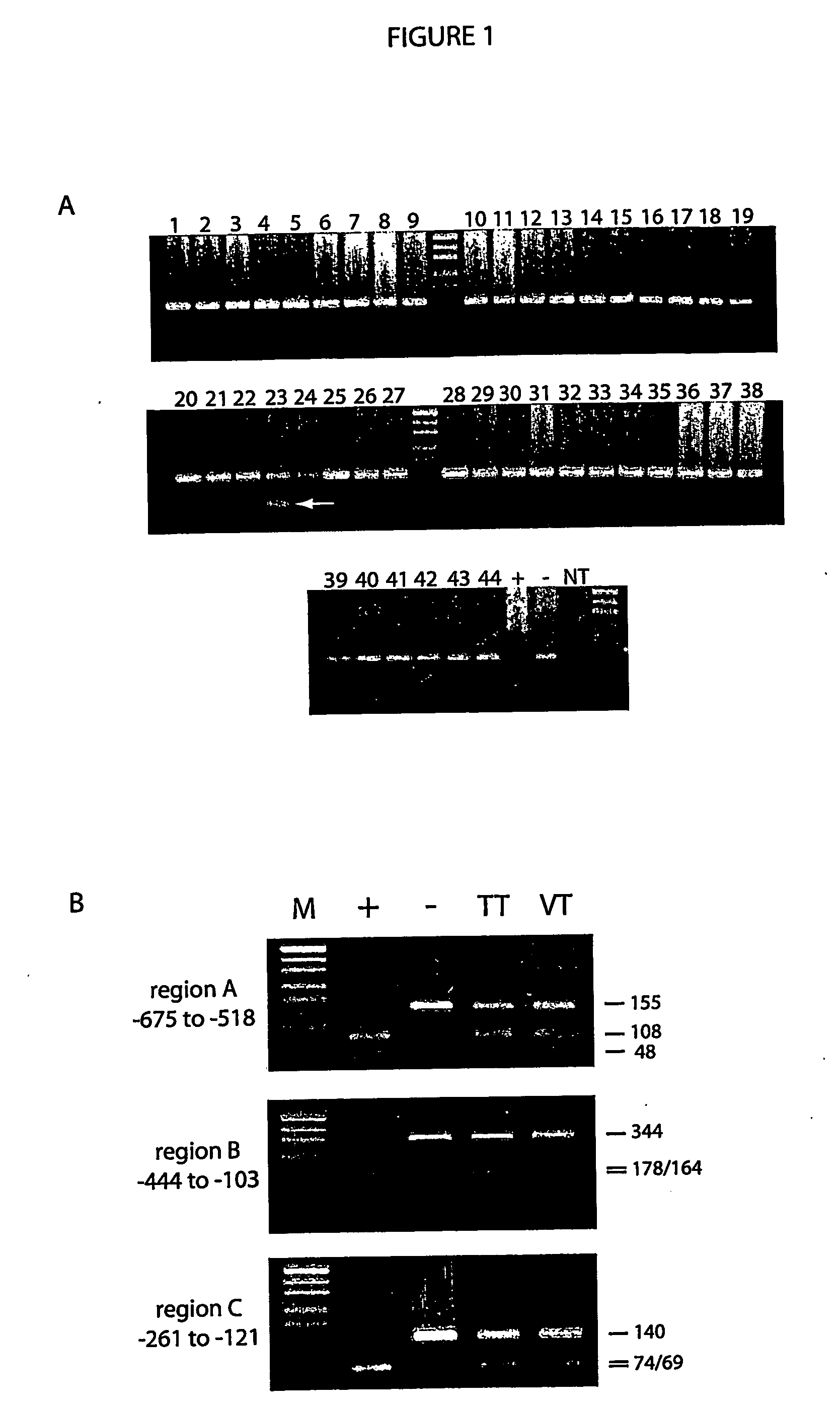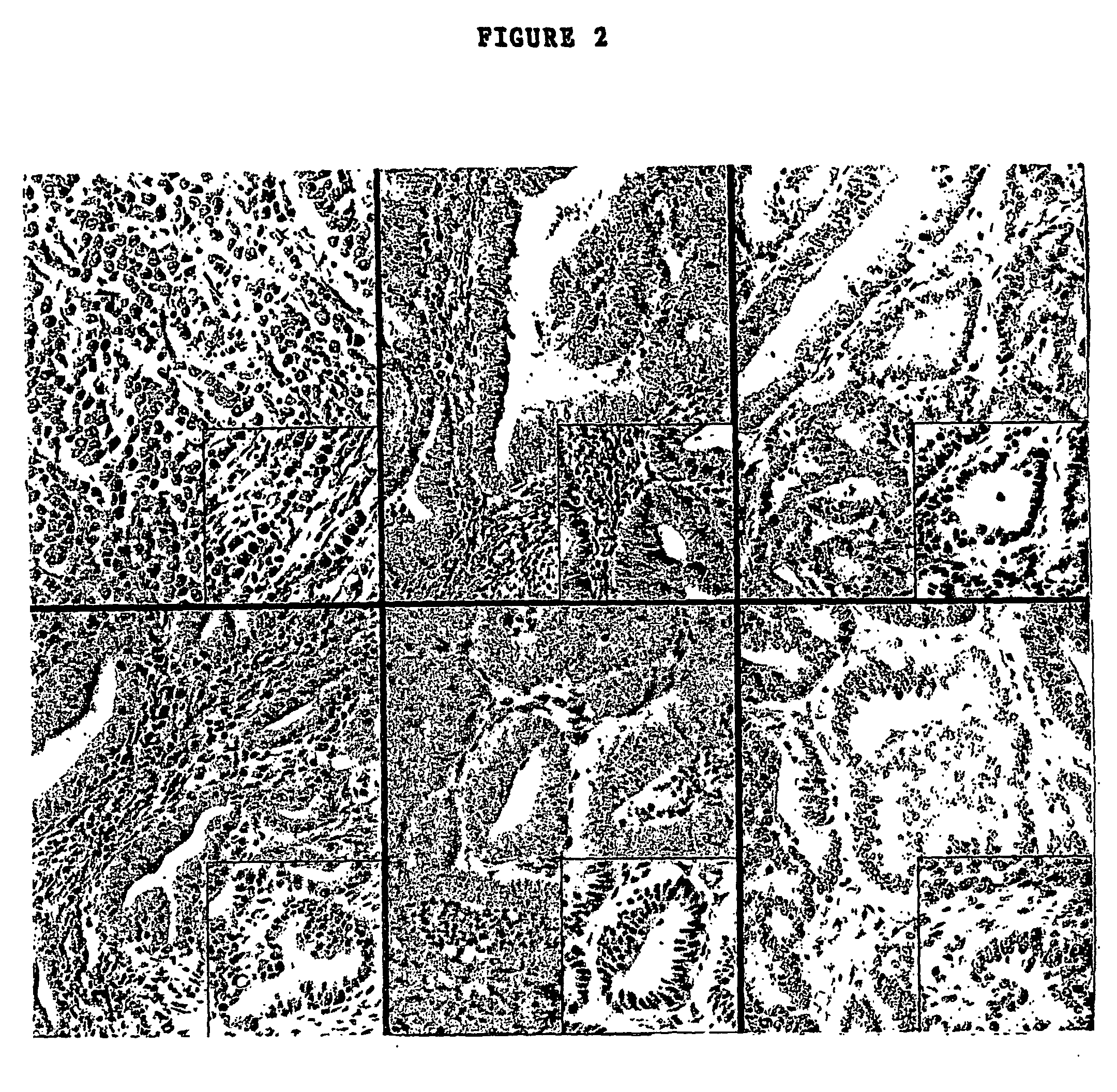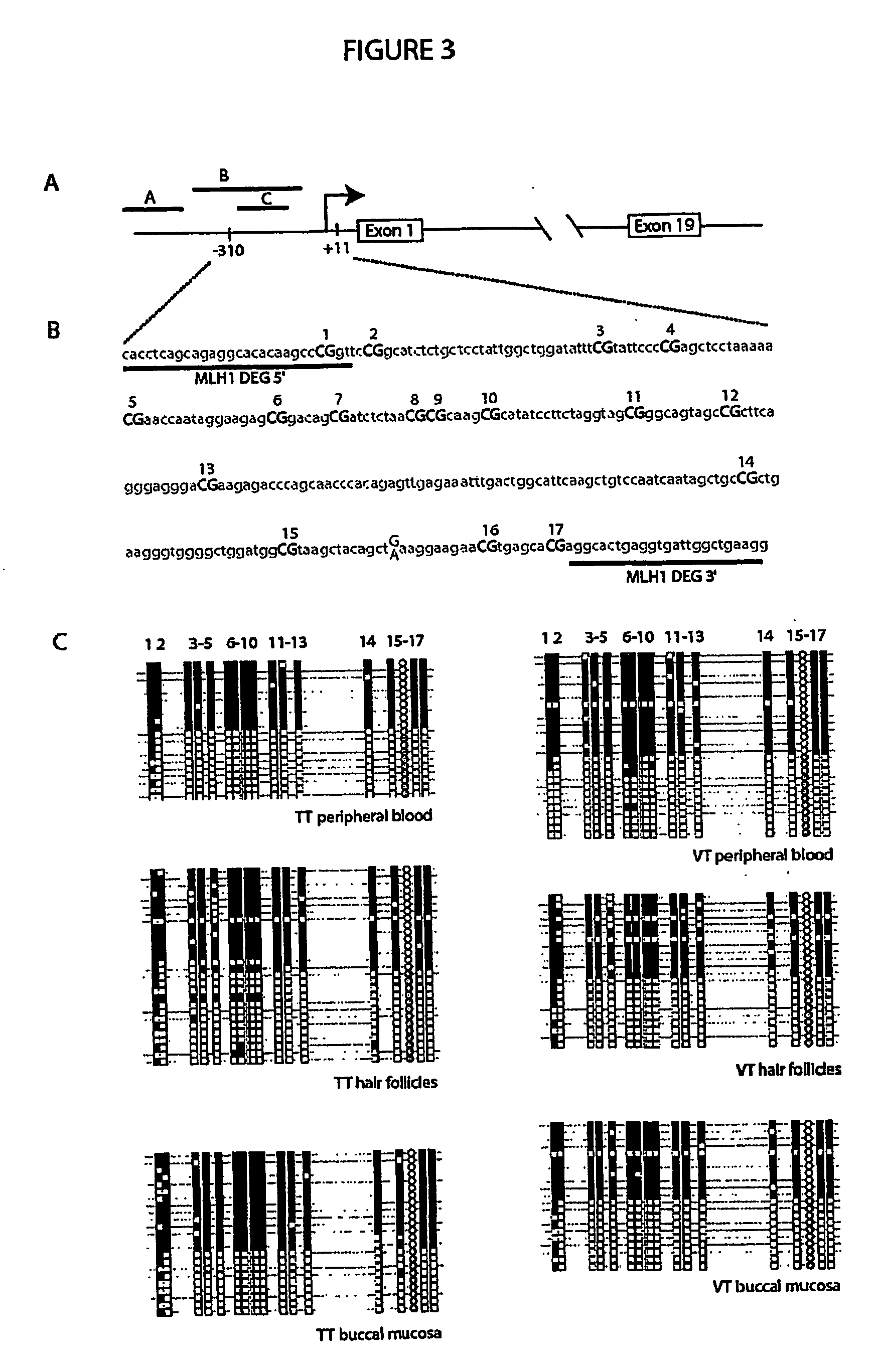Assessment of disease risk by quantitative determination of epimutation in normal tissues
a technology of epimutation and disease risk, applied in the field of disease risk assessment by quantitative determination of epimutation in normal tissues, can solve problems such as a tendency to revert and unstable phenotyp
- Summary
- Abstract
- Description
- Claims
- Application Information
AI Technical Summary
Problems solved by technology
Method used
Image
Examples
example 2
Methods and Materials
Blood Samples
[0049]Peripheral blood was collected from 22 healthy blood donors.
[0050]DNA was extracted from the peripheral blood as described in Example 1.
Methylation Screening Assays
[0051]Genomic DNA (2 μg) from each peripheral blood sample was subjected to bisulfite modification as described in Example 1. The bisulfite-treated DNA was then subjected to PCR with methylation-specific primers (i.e. primers that hybridise with DNA in which the CpGs within the primer binding sites are methylated) for the hMLH1 locus and the p16 locus (a tumour suppressor gene). Details of the primers used are listed in Table 4.
Results and Discussion
[0052]Of the 22 healthy blood donors, 12 had some detectable level of hypermethylated hMLH1 as demonstrated by the presence of a specific product following PCR with methylation-specific primers. For the p16 gene, 18 of 29 healthy blood donors showed a detectable level of hypermethylated alleles. For both genes, the PCR products were conf...
PUM
| Property | Measurement | Unit |
|---|---|---|
| frequency | aaaaa | aaaaa |
| chromatin structure | aaaaa | aaaaa |
| structure | aaaaa | aaaaa |
Abstract
Description
Claims
Application Information
 Login to View More
Login to View More - R&D
- Intellectual Property
- Life Sciences
- Materials
- Tech Scout
- Unparalleled Data Quality
- Higher Quality Content
- 60% Fewer Hallucinations
Browse by: Latest US Patents, China's latest patents, Technical Efficacy Thesaurus, Application Domain, Technology Topic, Popular Technical Reports.
© 2025 PatSnap. All rights reserved.Legal|Privacy policy|Modern Slavery Act Transparency Statement|Sitemap|About US| Contact US: help@patsnap.com



